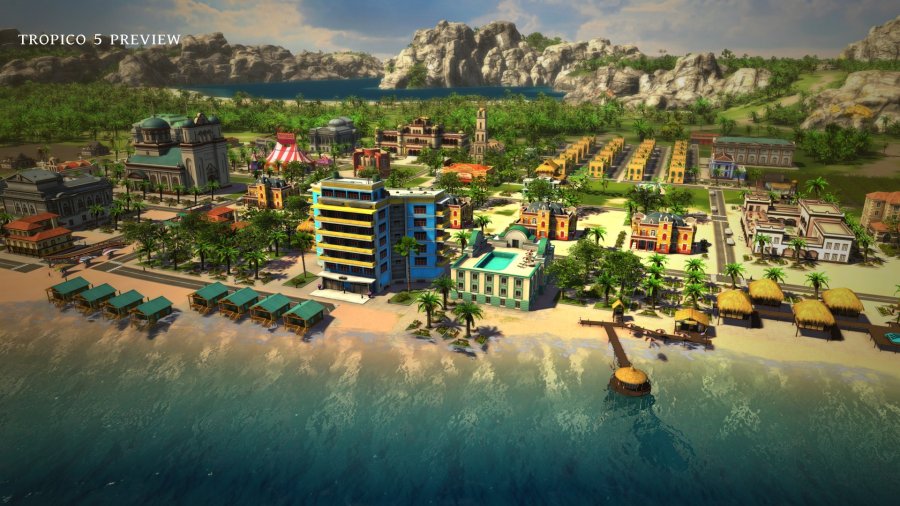

Sins of a Solar Empire remains one of the most well-balanced and intuitive strategy games of the past decade. A perfect hybrid of traditional RTS games and true 4X style (eXplore, eXpand, eXploit, eXterminate), the original Sins and its expansions were incredibly successful and popular with players, especially those looking to challenge others in massive multiplayer games.
Sins of a Solar Empire: Rebellion is a new, stand-alone expansion, meaning players do not need to have the original game to play (though owners of the original game will receive a discount when purchasing Sins: Rebellion). Does this stand-alone expansion continue to deliver the goods that the original brought players, or does it fall short of expectations? The short answer is a little of both.
On top of it all, Sins: Rebellion is still a masterful strategy game, bringing out the best in both the RTS and 4X genres. Decisions on what to build, when to build it, what ships to construct, etc, are all still present within the game, and every decision the player makes has an impact on the experience. While not a pure base-building game like Command and Conquer or a nearly-pure tactical RTS like Company of Heroes, Sins: Rebellion is a masterfully woven tapestry of both, and it rarely ever short-changes the player on either front.
Sins: Rebellion doesn’t follow the traditional path of expansions when considering new races or playable civilizations. Where other games would simply invent a new alien race, Rebellion took the three original races, the TEC (human), Advent (techno human), and Vasari (aliens), and split each one into two different factions: a loyalist faction and a rebellious faction.
TEC Loyalists are isolationists and favor defensive tactics, while TEC Rebels are a rag-tag bunch of mercs who like to pillage, just a step above full-blown pirates. Advent Loyalists favor mind control and will look to expand their cultural influence, while their counterparts, the Advent Rebels, are slightly insane zealots who love to fight but don’t rely on culture like their brethren. Vasari Loyalists are unique nomads that generate wealth through their ships, while Vasari Rebels are even more unique and play counter to other races by constructing large space stations that turn the other races’ powers against themselves.
Also new is a corvette class ship that serves as a much needed, middle ground option between the workhorse frigates and research-expensive cruisers. Each faction has unique, specialized corvettes that typically will debuff enemies instead of just dealing out damage: some ships can take down shields of other ships while others might damage the enemy’s engines, making a quick escape very difficult. These new abilities and features strongly favor players who love to micromanage their fleets, to gain tactical supremacy over their opponent, as those who rely upon the AI to auto-cast abilities will be frustrated.
Joining the fray as a new ship are the massive Titans, incredibly large capital ships that are expensive to research and build. Tactically, they are not like corvettes that should be micromanaged; instead, Titans wade into a battle and blow away entire armadas with sheer firepower. Like other capital ships, Titans can “level up” and receive bonus powers, such as passive upgrades or super powers that require anti-matter (similar to mana in RPG games) to cast.
Veteran players of the original game will recall that these games can take on lives of their own and can sometimes only be completed in multiple sittings. Sins: Rebellion adds multiple, optional victory conditions – such as diplomacy and research – that can drastically reduce the number of hours it takes to complete a game (though all of these victory conditions are, by default, turned off). It adds a new and fresh element to the game, forcing players to adopt new playing styles and strategies based on the opponent.
Diplomacy, somewhat of an ancillary part of the original game, was greatly expanded with a DLC package (shockingly called Sins: Diplomacy), and is now open to all players to pursue, regardless of whether the previous DLC package was purchased or not. In Sins: Rebellion, quests and missions are now present that allow the player to gain favor with other factions, perhaps giving pause to the human player who is used to nothing but eliminating all rivals from the galaxy. That being said, as with most games like this, war is inevitable, and typically more satisfying.
The scope and size of the game is incredibly massive, but can be unwieldy, especially for new players to the franchise. However, Ironclad Games does a tremendous job of allowing players to actually feel this scope and size with the ability to zoom into the hull of a ship, and just as quickly zoom out to see the entire playable universe, relegating that large ship to a mere ant, comparatively. On larger maps, players can build up their empires in relative ease, establishing whatever foothold is important for their style.
The size of the galaxy, however, leads to very long games, and extended periods of time where players find themselves simply playing housekeeper instead of militant aggressor. Many times, especially if the map is large enough, players may not run into their enemies – or at least the bulk of their military force – for hours at a time. Phase jumping between systems, which is like traveling in hyperspace in Star Wars, is an incredibly tedious task that can literally take entire fleets minutes (in real time) to simply jump two systems away.
The graphics engine has been given a major overhaul, as Sins: Rebellion is easier on the eyes than the original Sins. The layout of the HUD is almost identical, but the interface has been cleaned of unnecessary clutter, vastly increasing playing field. For example, the buttons for the market resource counter have been made smaller and pushed even further up the screen, freeing up more of the field for players to view. Everything is sharper and clearer, as intricate details of ships and structures are easier to see without having to zoom in to uncomfortable levels.
Sins: Rebellion isn’t without it flaws though. The artificial intelligence hasn’t been improved from the original game in any measure that a player would expect, especially considering the four years between launches (not including updates and DLC). While the AI does a decent job of picking targets to attack if the player chooses not to individually manage their ships and/or fleets, special abilities – and anti-matter – are often wasted if players do not micromanage these attacks. Because of this, it is highly advised that players create specialized fleets and continually give orders to those fleets in battle.
The biggest gameplay element that is still missing though is a campaign story, something that is hardly ever missing from true RTS games. However, due to the hybrid nature of Rebellion, the 4X game style doesn’t always lend itself to great campaign play (though it would still be nice to see someone try). Many years ago, Homeworld seemed to capture this element perfectly, but subsequent 4X games (Masters of Orion, Galactic Civilizations, and Sins series) never seemed to successfully (if at all) incorporate a campaign and story that well. While this isn’t a requirement and doesn’t detract from what Sins: Rebellion does well, it is disappointing nonetheless that it isn’t even being tried – as many gamers unfamiliar with the series might be more inclined to give it a shot.
Along those lines, while there are more difficulty options present in Sins: Rebellion, the harder levels simply seem to allow the AI to “cheat” (not entirely uncommon in games), but it would be preferable to see a significant rise in AI behavior as opposed to simply granting fewer economic, military and research penalties. On the flip side, the easier levels are almost too easy, as tactics go right out the window.
The easy levels are very simple to master and it is advisable for new players to start here due to the incredibly steep learning curve of the game. RTS veterans who are not familiar with this franchise would be advised to go through the tutorials to understand the basics, if nothing else. That being said, the tutorials themselves are incredibly bland and do not teach players tactics (or common sense for that matter). They provide a very basic and rudimentary foundation to build upon, and players who try to emulate the tutorial lessons exactly will find their empires burning very quickly – they are to be used to understand general concepts, not strategy – hence the steep learning curve.
Will players get what they pay for? The strategic elements of the game have always been around, so essentially, players are paying $40 to upgrade the graphics, get some new factions and a few new ships. If this expansion was simply DLC for $15, it would probably be worth the price tag, but for $40, it’s overpriced for what’s “in the box.” Players would expect vastly improved AI and many more gameplay options for this price.
Ultimately, the game is, and most likely always will be, a niche game; 4X Games never seem to garner the mass appeal that they desire (or deserve). The learning curve doesn’t help this in the slightest, as it is so steep that new entrants into the series may give up on it before giving the experience a proper amount of time to digest. A stand-alone expansion should welcome new players relatively easily, but Rebellion doesn’t do this: it assumes its players are familiar with the original game, and treats the gameplay as such.
Sins of a Solar Empire is available now for the PC.
–
Follow me on Twitter @mattrowland1




 Destiny House of Wolves Guide: Prison of Elders How to and General Tips
Destiny House of Wolves Guide: Prison of Elders How to and General Tips 5 Accessories New PlayStation 4 Owners Should Pick Up
5 Accessories New PlayStation 4 Owners Should Pick Up Top 8 Mass Effect 3 Character Lookalikes
Top 8 Mass Effect 3 Character Lookalikes What is an Action/Adventure Game?
What is an Action/Adventure Game? Tropico 5 Windowed Mode: Where to Find It
Tropico 5 Windowed Mode: Where to Find It